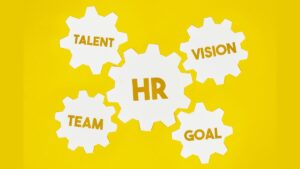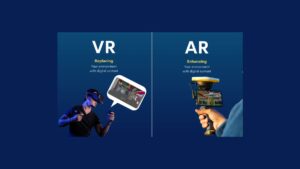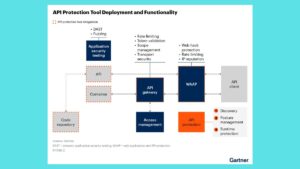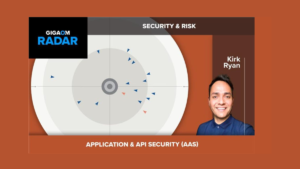Strategically Scaling HR with People Analytics

In today’s data-driven business environment, HR departments are under increasing pressure to demonstrate their impact on organizational success. One of the most effective ways to achieve this is through people analytics. By leveraging data-driven insights, HR can make more informed decisions, optimize talent management, and strategically scale HR operations to align with organizational goals. This blog explores how people analytics can be used to scale HR strategically and drive organizational success.
1. Understanding People Analytics
Overview:
People analytics involves the use of data and statistical methods to analyze and interpret employee data. This can include everything from hiring and performance metrics to employee engagement and turnover rates.
Key Components:
- Data Collection: Gathering data from various sources such as HR systems, employee surveys, and performance evaluations.
- Data Analysis: Applying statistical and analytical techniques to understand patterns and trends.
- Insights Generation: Translating data findings into actionable insights that inform HR strategies.
2. Enhancing Recruitment and Talent Acquisition
Overview:
People analytics can significantly improve the recruitment process by providing data-driven insights into hiring practices and candidate selection.
Benefits:
- Optimized Hiring: Analyzes past hiring data to identify the characteristics of successful employees and improve candidate selection.
- Efficiency Gains: Reduces time-to-fill and cost-per-hire by streamlining the recruitment process and focusing on high-impact activities.
- Predictive Analytics: Uses predictive models to forecast future hiring needs and workforce trends.
3. Improving Employee Retention
Overview:
High employee turnover can be costly and disruptive. People analytics helps identify factors contributing to turnover and develop strategies to improve retention.
Benefits:
- Turnover Prediction: Identifies employees at risk of leaving by analyzing patterns such as tenure, engagement levels, and performance metrics.
- Retention Strategies: Develops targeted retention strategies based on data insights, such as personalized career development plans and competitive compensation packages.
- Employee Engagement: Measures engagement levels and identifies factors that contribute to job satisfaction and loyalty.
4. Optimizing Performance Management
Overview:
Performance management is crucial for employee development and organizational success. People analytics can enhance performance management processes by providing objective data.
Benefits:
- Performance Insights: Tracks and analyzes performance metrics to identify top performers and areas for improvement.
- Goal Setting: Uses data to set realistic and achievable performance goals, aligning them with organizational objectives.
- Feedback and Development: Provides data-driven feedback and personalized development plans to support employee growth.
5. Enhancing Workforce Planning
Overview:
Strategic workforce planning ensures that an organization has the right people in the right roles at the right time. People analytics supports this by providing insights into workforce trends and needs.
Benefits:
- Workforce Forecasting: Predicts future workforce needs based on business growth, market trends, and employee data.
- Talent Mapping: Identifies skill gaps and potential talent shortages, enabling proactive recruitment and development strategies.
- Succession Planning: Uses data to identify and prepare high-potential employees for future leadership roles.
6. Driving Diversity and Inclusion Initiatives
Overview:
Diversity and inclusion (D&I) are critical for creating a positive workplace culture and driving innovation. People analytics can support D&I efforts by providing data on workforce demographics and inclusion metrics.
Benefits:
- D&I Metrics: Measures diversity and inclusion metrics to track progress and identify areas for improvement.
- Bias Detection: Analyzes data to identify and address potential biases in hiring, promotions, and performance evaluations.
- Inclusive Culture: Develops data-driven strategies to foster an inclusive workplace culture and support diverse talent.
7. Improving Employee Experience
Overview:
Employee experience encompasses all aspects of the employee lifecycle, from recruitment to retirement. People analytics helps enhance the employee experience by providing insights into employee needs and preferences.
Benefits:
- Engagement Surveys: Analyzes survey data to understand employee satisfaction and identify areas for improvement.
- Personalized Programs: Creates personalized programs and initiatives based on employee data and feedback.
- Workplace Well-being: Monitors and improves employee well-being through data-driven wellness programs and support systems.
8. Enhancing HR Decision-Making
Overview:
People analytics supports data-driven decision-making by providing actionable insights into various HR processes and strategies.
Benefits:
- Informed Decisions: Helps HR leaders make informed decisions based on comprehensive data analysis rather than intuition.
- Strategic Alignment: Aligns HR strategies with organizational goals and objectives through data-driven insights.
- Continuous Improvement: Supports continuous improvement by providing feedback and data on the effectiveness of HR initiatives.
Conclusion
Strategically scaling HR with people analytics is a powerful approach to optimizing HR functions and driving organizational success. By leveraging data-driven insights, HR departments can enhance recruitment, improve retention, optimize performance management, and support diversity and inclusion initiatives. As organizations continue to evolve, people analytics will play a crucial role in ensuring that HR strategies are aligned with business goals and effectively support the workforce. Embracing people analytics allows HR to transition from a reactive to a proactive role, positioning the department as a strategic partner in achieving long-term success.







